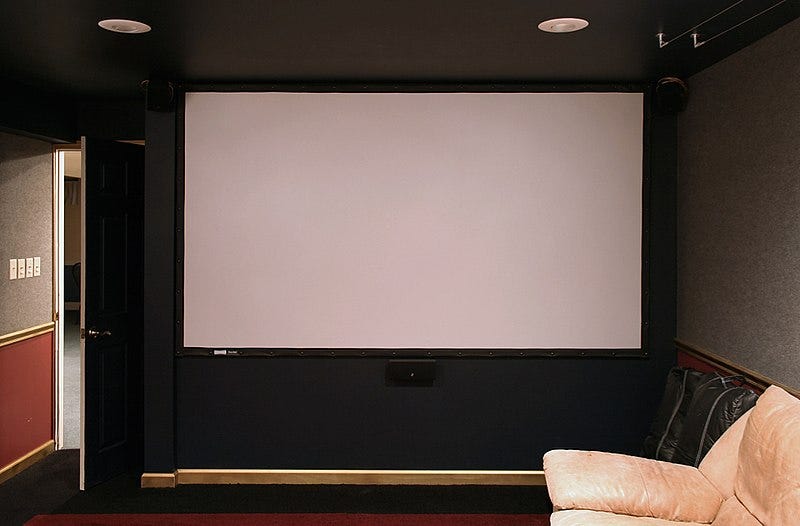Electric or Manual? Screening Projector Screen Options
Everything you need to get started planning your home theater screen!

I’ve become an expert in home theaters the last few years. Ditch that awful old TV and join me in the light, the light of the projector, that is! You can read my full guide to home theaters here, or check out my guide to understanding projectors here.


Fixed screen
Fixed screens are, well, fixed. You attach them to the wall, and you’re done! As long as you don’t mind not using that wall for anything else, this is a pretty great option, and it ensures the highest quality — which is why the top-notch home theaters often go this route.
Electric retractable projector screens
Electric retractable screens will tend to wear out faster and, of course, require electricity to operate — this means another power outlet is needed for the system. But the convenience! They usually come with a remote, which makes it super easy to pull it down for movie night.
Manual retractable screens
Manual retractable screens require that you physically pull them into place and then give them another tug to release them back into their sleeve gently, but they’re likely to last longer, and they don’t require a plug. They also cost less than their electrified counterparts.
Hack: Automated projector screen
That said, one of our favorite hacks for an electric projector screen is making it automated. Some projector screens will come with a volt trigger that you connect to your projector. Then, whenever your projector turns on, the screen will automatically lower itself into place.
You can consider other elements of the projector screen as well, such as the type of reflective material they use, but don’t get too carried away. It’s generally okay to go for a lower price-point on this unless you’re adamant about getting insanely perfect picture quality (in which case you’ll need to splurge for top-notch projector and media storage as well).
Hi there! I’m Odin Halvorson, an independent scholar, film fanatic, fiction author, and tech enthusiast. If you like my work and want to support me, please consider subscribing to a paid tier for as little as $2.50 per month!
